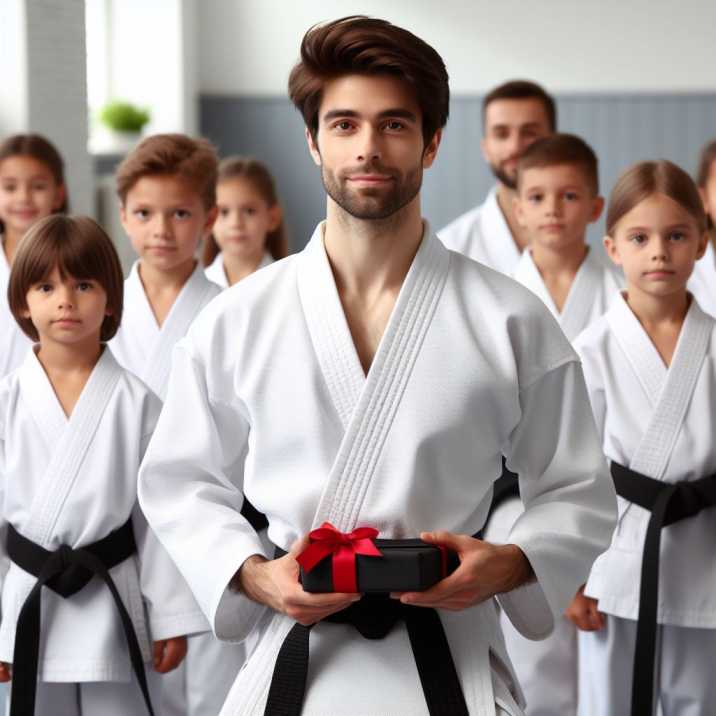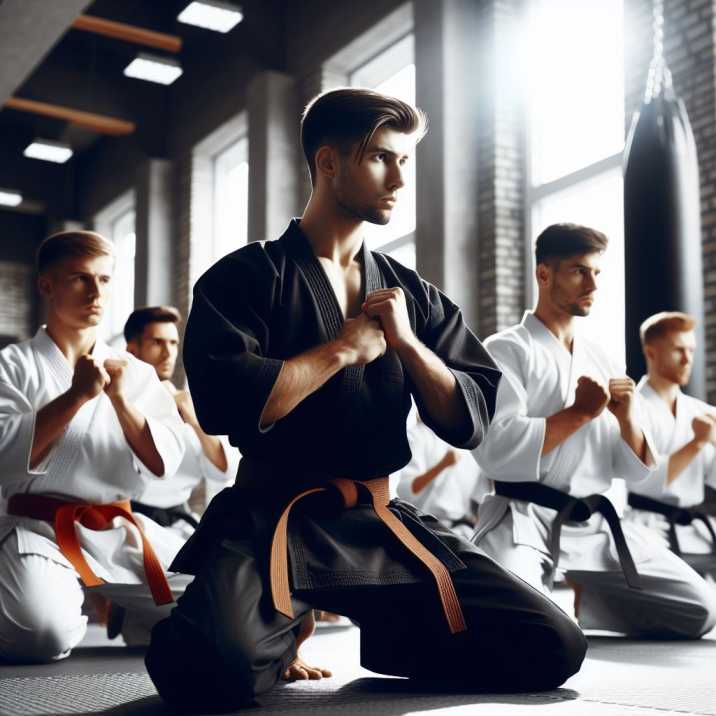Introduction
Table of Contents
Highest Rank in Karate
Karate, a martial art known for its discipline and precision, has a hierarchical structure that defines a practitioner’s expertise. If you’re venturing into the world of karate, you may be curious about the ultimate goal – the highest rank. In this comprehensive guide, we’ll unravel the mysteries surrounding the highest rank in karate, exploring its significance and the journey to attain it.
The Culmination of Mastery: Reaching the Zenith in Karate
Embarking on a martial arts journey is a commitment to self-improvement and mastery. The highest rank in karate symbolizes the culmination of years of dedication, practice, and spiritual growth. Imagine standing at the pinnacle of this ancient discipline, revered for your skill and wisdom. Let’s delve into the intricacies of achieving this esteemed status and the transformative journey it entails.
Navigating the Karate Hierarchical Landscape
Before we delve into the quest for the highest rank in karate, let’s briefly explore the hierarchical structure of this martial art. Understanding the belts and ranks is crucial for grasping the significance of the highest rank. From white to black belts, each level signifies progress, with the ultimate goal being the prestigious black belt. But what lies beyond the black belt? Let’s embark on this enlightening journey.
Decoding Karate Ranks: From White to Black and Beyond
Karate employs a belt system to signify a practitioner’s level of expertise. The journey typically begins with a white belt, symbolizing purity and innocence. As one advances, they progress through various colored belts, each representing a stage of development. The coveted black belt, often considered the zenith of achievement, opens the gateway to higher echelons of mastery.

The Road to Shodan – Attaining the First-Degree Black Belt
Reaching the black belt is a significant milestone, but the journey doesn’t end there. The first-degree black belt, known as Shodan, signifies the beginning of true mastery. Achieving Shodan requires a profound understanding of karate principles, advanced techniques, and the ability to impart knowledge to others.

Beyond Shodan: Exploring Dan Levels and the Ultimate Rank
As practitioners continue their journey, they can progress through additional dan levels, each denoting a deeper level of expertise. The highest rank in karate often involves reaching the coveted tenth dan. Attaining this level is a testament to unparalleled skill, knowledge, and a profound impact on the karate community.
The Spiritual Aspect: Beyond Technique and Into Philosophy
Karate is not just about physical prowess; it’s a holistic discipline that encompasses mental and spiritual growth. The highest rank in karate transcends mere technique, delving into the philosophy and values that define a true martial artist. Understanding this spiritual aspect is crucial for those aspiring to reach the pinnacle of karate.
The Path to Mastery: Training, Discipline, and Mentorship
Achieving the highest rank in karate demands unwavering commitment. Training rigorously, maintaining discipline, and seeking guidance from experienced mentors are integral aspects of this journey. Aspiring martial artists must embrace the principles of perseverance, humility, and continuous self-improvement.
Elevating Your Karate Journey: Balancing Tradition and Innovation
In the ever-evolving landscape of martial arts, finding the balance between traditional values and innovative approaches is key. Those aspiring to the highest rank in karate must honor the rich traditions of the art while adapting to new insights and techniques that contribute to their growth.
Overcoming Challenges: The Grit Behind the Glamour
The path to the highest rank in karate is not without challenges. It requires overcoming physical limitations, pushing through plateaus, and navigating the complexities of personal growth. Understanding and embracing these challenges is integral to the transformative journey toward martial arts mastery.
Celebrating Success: Recognition and Contribution to the Karate Community
Attaining the highest rank in karate is not just a personal achievement; it’s a contribution to the broader karate community. Recognizing and celebrating the success of fellow practitioners fosters a sense of camaraderie and elevates the entire martial arts community.
Conclusion: Unveiling the Mysteries and Achieving Karate Mastery
In conclusion, the journey to the highest rank in karate is a profound exploration of discipline, dedication, and self-discovery. From the initial white belt to the pinnacle of the tenth dan, each stage represents a commitment to continuous improvement and the embodiment of martial arts philosophy. Beyond the physical techniques, the highest rank in karate encompasses spiritual growth, mentorship, and a contribution to the broader community.
As you embark on your karate journey, keep in mind that the highest rank is not just a symbol of personal achievement but a responsibility to uphold the values of this ancient discipline. Embrace challenges, celebrate successes, and find the delicate balance between tradition and innovation.
Whether you’re a novice curious about the intricacies of karate or a seasoned practitioner aspiring to reach new heights, may this guide serve as a roadmap to understanding the highest rank in karate and the transformative path that leads to it.
FAQs (Frequently Asked Questions): Unlocking Key Insights
- Q: How many dan levels are there in karate beyond the black belt?
- A: Karate practitioners can progress through various dan levels beyond the black belt, with the ultimate goal often being the tenth dan.
- Q: Is achieving the highest rank in karate solely about physical prowess?
- A: No, the highest rank in karate involves a holistic approach, incorporating mental, spiritual, and philosophical aspects along with physical skill.
- Q: What does the term “Shodan” signify in karate?
- A: “Shodan” refers to the first-degree black belt and marks the beginning of true mastery in karate.
- Q: How important is mentorship in achieving the highest rank in karate?
- A: Mentorship plays a crucial role in the journey to the highest rank, providing guidance, wisdom, and a supportive environment for growth.
- Q: Are there specific challenges associated with reaching the tenth dan in karate?
- A: Yes, attaining the tenth dan comes with unique challenges, including overcoming personal limitations and contributing significantly to the karate community.
- Q: What role does tradition play in the pursuit of the highest rank in karate?
- A: Tradition is integral to karate, and practitioners must find a balance between honoring traditional values and embracing innovative approaches.
- Q: Can one achieve the highest rank in karate without understanding its philosophical aspects?
- A: While technical skill is crucial, a deep understanding of karate’s philosophy enhances the journey to the highest rank, emphasizing values beyond physical prowess.
- Q: How often should a karate practitioner train to reach the highest rank?
- A: Consistent and disciplined training is essential; however, the frequency can vary based on individual goals, dedication, and the guidance of mentors.
- Q: Is there a specific age limit for aspiring martial artists to reach the highest rank in karate?
- A: No, there is no strict age limit. The journey to the highest rank is about personal growth, and individuals progress at their own pace.
- Q: How can achieving the highest rank in karate contribute to the broader martial arts community?
- A: Attaining the highest rank is not only a personal accomplishment but also a contribution to the karate community, fostering camaraderie and inspiring fellow practitioners.


